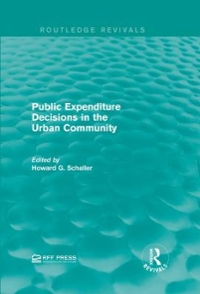Question
Consider two economies, Home and Foreign. The DC/FC exchange rate (EDC/FC) is determined by the asset approach to the exchange rate. Home: Real money demand:
Consider two economies, Home and Foreign. The DC/FC exchange rate (EDC/FC) is determined by the asset approach to the exchange rate.
Home: Real money demand: Money supply:
Foreign: Real money demand: Money supply:
L(R, Y) = 0.4Y - 2500R MS = 15000 L*(R*, Y*) = 0.25Y* - 2000R* MS* = 13500
Initially, both Home and Foreign are in their respective long-run equilibrium. The full- employment level of output in Home is 10000, which is 3000 units less than that of Foreign. The long-run (nominal) interest rate in Home and Foreign are 10% and 12.5% respectively.
Note: Interest rates are expressed in decimal points (i.e., if R = 0.1, then R = 10%). Keep your answer in 4 decimal points if needed. Be sure to show your work.
a) What are the initial long-run equilibrium domestic and foreign price levels if the market expects 1.5 DC will exchange 1 FC? Find the long-run exchange rate. (4 points)
Now, suppose there is a breakthrough in the payment technology in Foreign such that the foreign money demand changes permanently to
L*(R*, Y*) = 0.24Y* - 2000R* Also, any permanent change will cause the expected DC/FC exchange rate to change by 0.225 DC per FC.
b) Find the short-run equilibrium foreign interest rate and the DC/FC exchange rate in the short run. (4 points)
c) Find the new long-run equilibrium DC/FC exchange rate and foreign real money balance. (4 points)
d) If the central bank of Home finds the change in the short-run exchange rate in part (b) undesirable and wants to keep it at the initial long-run level, can they to achieve this goal? Yes/No, explain. (8 points)
If yes, find the level of domestic MS that will achieve this goal.
If the answer is no and the central bank of Home wants to bring the exchange rate as close to the initial long-run level as possible, find the level of money supply that they should set. What will be the DC/FC exchange rate that is consistent with that level of money supply?
Note: You can assume the change in domestic money supply as a temporary one.
Step by Step Solution
There are 3 Steps involved in it
Step: 1

Get Instant Access to Expert-Tailored Solutions
See step-by-step solutions with expert insights and AI powered tools for academic success
Step: 2

Step: 3

Ace Your Homework with AI
Get the answers you need in no time with our AI-driven, step-by-step assistance
Get Started


